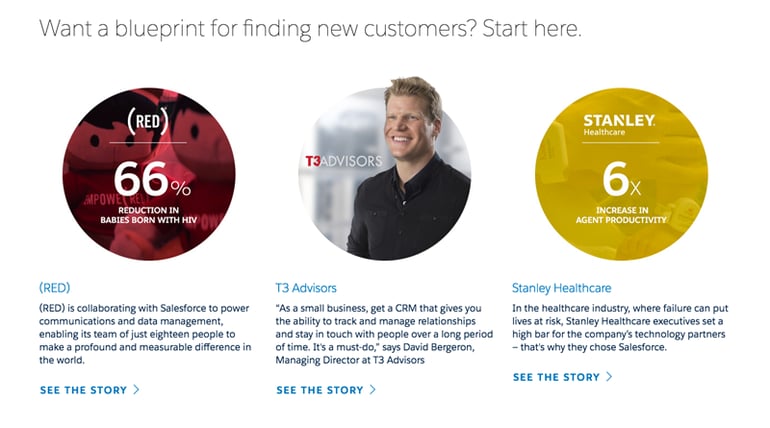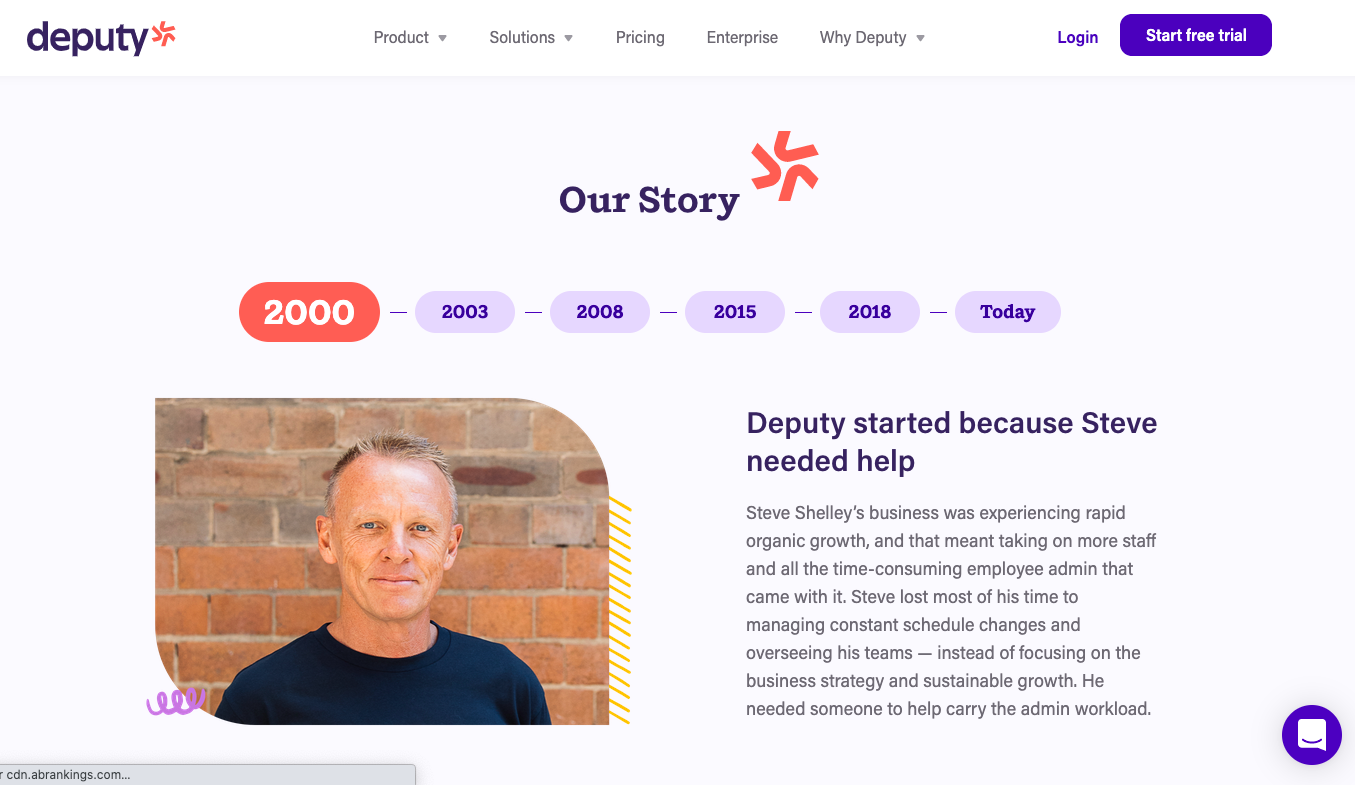Everyone loves a good story. Your customers are no exception. And that means, in the crowded world of B2B content, every business has an ace to play – whether or not they realize it.
But what if your business is super technical, highly niche, or dare we say "boring”?
Well here’s what’s REALLY boring: a brand that’s totally void of human emotion, personality or lasting impact. And that’s where storytelling marketing can really help you shine. Here’s a look at why you should make stories part of your marketing strategy, plus some simple ideas to get started.
What Is Storytelling Marketing?
Storytelling marketing, also referred to as brand storytelling, uses a narrative to communicate a message. A sub-form of content marketing, it is a powerful way to humanize your brand and help your customers understand why they should care about something.
Done right, storytelling can breathe life and much-needed emotion into an otherwise "blah" brand message. And emotion is a powerful persuader in any marketer's toolbox.
- Want to read more about humanizing your brand? See our related article, What is H2H Marketing and How Can I Apply It to My Business?
The Importance of Storytelling in Marketing (And The Science)
The effectiveness of storytelling isn’t just a fun little theory for marketing creatives. Science actually shows that our brains love stories. The notion is rooted in extensive scientific research that suggests our brains are predisposed to connect more emotionally with messages that “feel” like a story.
Let’s dig in a little deeper. Here’s what’s going on with our grey matter when we hear a good story:
- Neural coupling – This phenomenon has to do with a listener “synching up” brain states with the communicator. In other words, a well-told story evokes the listener to turn that story into their own ideas and experiences.
- Mirror neurons – Stories fire up your mirror neurons – meaning the brain has developed familiar pathways that allow you to feel the same feelings as the storyteller. (More on that here.)
- Dopamine – When your brain experiences an emotional event, it releases dopamine into the system – and that helps it remember things with greater accuracy.
- Cortex activity – To process facts and figures, the human brain relies on two specific areas: the Broca’s and Wernicke’s area; whereas a story activates several additional areas, including the motor cortex, sensory cortex and frontal cortex.
Source: Fast Company Infographic, How Storytelling Affects the Brain.
For more writing techniques to apply to your marketing strategy, also check out these 5 Psychological Hacks to Inspire Your Copywriting Techniques.
Marketing Storytelling Techniques
Ok, so your customers’ brains are ripe for a good story. Now what? How do we apply this to your B2B brand marketing?
For business leaders who view themselves as being more on the “techie” side, such as manufacturers, engineers, and IT companies, don’t panic! Telling stories isn’t as hard as you think.
Let’s first define what we mean by a “story.” We’re not talking about long-form, Pulitzer-Prize-worthy stuff here. Even the simplest idea can be communicated in a narrative-like format that will spur those brainwaves and cause your customers to feel something.
Below are four simple but effective techniques that you can implement for your business.
Storytelling Technique #1: Start With Data, Layer On a Story
Factual data and statistics make for compelling case studies. But remember what we just learned about cortex activity? Fact-processing only fires up a portion of the brain. So try enhancing your data with an authentic story that triggers the senses and makes a more lasting impact.
Let’s say your business manufactures medical devices. Your company’s surgical device “increased patient eligibility for an arthritic procedure by 12 times.” Impressive from a business standpoint – but did you “feel” something when you read that fact?
Now, what if we learned how that surgical device made the recently widowed Bess Cutler eligible for a surgery that changed her life: with movement in her hands again, Bess rekindled her passion for piano and started offering lessons to neighborhood children.
Storytelling Technique #2: Get Personal with Prospects
If you’ve been tracking your website visitors, you may find that the About Us page is one of the most frequently visited pages on any given B2B website. Why? For prospective customers considering using your products or services, they want to get a peek behind the curtain to get a better sense of you. So what’s your story?
Was your brand born from humble beginnings? A husband-wife team who turned rented garage space into a manufacturing workshop? A young mother whose toddler sparked the idea for a novel invention?
Give visitors a few personal nuggets that humanize your business. Honesty and authenticity, which are inherently at the core of any storytelling strategy, go a long way in differentiating you from your competitors.
Storytelling Technique #3: Let Customers Tell the Story for You
Your brand story doesn’t have to revolve around your company’s founder or executives. You can also let your customers take the lead role by allowing them to recant stories on how your business made a difference for them.
There’s no single best way to do this. You can weave these stories into case studies, as mentioned above, write a few customer story blurbs on your website, or create customer video testimonials to share on social media.
Customer stories not only add that much-needed emotional touch, but they ratchet up the trust factor and lend real credibility to your business. Here is a simple but effective story of a customer journey for virtual fitness company, Applied Fitness Solutions.
Storytelling Technique #4: Storytelling In Video Marketing
Think your product or service isn’t story-worthy? Not so fast. Video marketing is a great way to turn mundane products into meaningful narratives.
The sky’s the limit when you’re struggling for ways to connect your customers’ emotions to a so-called “boring” business – so don’t be afraid to get imaginative!
For my money, there is no better example of this than Duracell, who knocks this concept out of the park by taking a commonplace product (a battery) and creating a series of fictional events around its product.
Duracell’s stories range from intense (a hospital patient whose life relies on a battery-powered machine), to humorous (a clumsy camper whose flashlight dies at an inopportune time), to heart-warming, like the video below. (Warning: grab the tissues for this one.)
Keep in mind, you don’t need a full-blown, big-budget campaign like Duracell’s to leverage the power of storytelling. You can turn simple brand concepts into storyboards, then into animated explainer videos at a relatively reasonable budget.
Storytelling Marketing Examples: More Techniques in Action
Saleforce's Customer Stories. Borrowing from the above Technique #1, Saleforce.com does an excellent job of weaving short narratives (like Bess's) into facts and figures. It uses case studies -- which are in fact labeled as Customer Stories -- that are centered on end users; in other words, the humans behind those B2B products. You can explore more examples like the ones below by clicking into the company’s Customers page.

Deputy's "About Us" Section. Using Technique #2 from above, workplace software company Deputy includes "Our Story" as part of its About Us section. Enticing readers with the opening narrative of “Steve needed help,” website visitors can click through a succinct timeline of the company’s journey.

A Storytelling Marketing Company Can Help
With these storytelling marketing tips and techniques, you are well on your way to creating an engaging brand message that differentiates your B2B company. You may consider outsourcing to seasoned storytelling marketing folks (hint: we know a few good ones), or you can try and tackle it in-house. Either way, you can count on one thing: at the end of the day, you're selling not to businesses, but to humans -- and their brains await your story.



